Los Angeles Is Building a Future Where Water Won’t Run Out
(Bloomberg) -- A helicopter whisks off a rooftop in downtown Los Angeles, climbs above a thin layer of haze and soars over barren mountains past the city’s edge. Soon, scars of climatic stress are evident to L.A. Mayor Eric Garcetti and Martin Adams, general manager and chief engineer of the city’s water and power department, as they peer out the windows. Trees torched years ago by wildfire. Flats parched by sun and little precipitation.
It’s another July scorcher, days after California Governor Gavin Newsom asked residents to conserve amid one of the worst droughts on record. The crisis spans across the southwestern U.S. Outside Las Vegas, the enormous Lake Mead reservoir that feeds the Golden State as well as Nevada and Arizona plunged in June to its lowest level since 1937. In August, federal officials ordered the first-ever water cuts on a Colorado River system that sustains about 40 million people. Even after pounding holiday storms, 64% of the land in Western states was still experiencing severe to exceptional drought in January, which is on track to be the driest on record in some parts.
Yet leaders of Los Angeles—a metropolis forged by water heists from distant lands—think they’re on a path to drought resiliency. Heavy investments in water storage, rainwater capture and reclamation are serving towards a goal of supplying 70% of the city’s water from local sources by 2035.

“I have a strange confidence that we’re going to have plenty of water,” Garcetti says on a break on his day-long tour of water resources and communities north of L.A. that help hydrate his city.
Los Angeles has grown and thrived by piping in water from faraway places, and with meager precipitation and fast-melting snowpack the norm, a drier future almost certainly awaits. But observers say Garcetti’s confidence in L.A.’s potential for self-reliance is well founded.
“The L.A. area is going to be the epicenter of climate adaptation in urban water in the world,” says Felicia Marcus, the former chair of the California State Water Resources Control Board and former board president of L.A.’s department of public works who is now a visiting fellow at Stanford University. “It’s going to be expensive, but it’s going to seem like a bargain compared to being without water.”
Work is already underway. The city is planning massive upgrades to its wastewater treatment plants to make that water potable. Initial costs for new treatment required at the city’s Hyperion Water Reclamation Plant are about $4.3 billion. This is a key piece of L.A.’s water-security puzzle: to source 35% of the city’s water from recycling, up from 2% currently.
Meanwhile, some of the largest groundwater treatment facilities in the world are under construction throughout the San Fernando Valley, while federal-ordered remediation by groundwater polluters is underway. To retain more of the scarce precipitation that hits the city, L.A. is expanding the catch-basins and inlets that recharge its aquifers, with a plan to double its annual rainwater capture capacity over the next 15 years. Today, a lot of stormwater flows into the ocean. Bolstering the ability to conserve and reuse such supplies will boost the city’s self-sufficiency, Adams says.

But the focus on building and renovating infrastructure may overshadow the vital need to conserve, according to Peter Gleick, co-founder and president emeritus of the Pacific Institute, a water think tank in the Bay Area. He fears that L.A.’s progress is blinding its leaders to the urgency of the current drought, pointing to the city’s increased per capita water use last summer.
“The water they’ve failed to save is water that is not in our reservoirs or streams any longer but could have been,” Gleick says. If this year is dry—and so far it has been—“they may be sorry that they weren’t more proactive.”

For his sojourn to northern communities that quench the city, Garcetti, 50, arrives early to the Los Angeles Department of Water and Power building. He’s clad in a plaid, dark jeans and boots, and armed with a text from 1948 that his father, former Los Angeles County District Attorney Gil Garcetti, gave him (“City-Makers: The Men Who Transformed Los Angeles From Village to Metropolis During the First Great Boom, 1868-76,” by Remi Nadeau). The get-up speaks to parts of the day ahead, including visiting dusty project sites.
“L.A. is a miracle born out of water,” says Garcetti, who describes himself as a student of the city’s history.
If Garcetti is in a contemplative mood, perhaps it’s because his days as mayor are numbered. After a second and final term challenged by a pandemic, rising homelessness, civil unrest and declining transit use, the mayor is likely to leave office within months to serve as U.S. ambassador to India—a position President Joe Biden nominated him for in July, just before his aerial tour. (Garcetti, who awaits confirmation in the Senate, has faced allegations that he knew about a close aide’s alleged sexually harassing behavior, which the mayor has strongly denied.)
For now, the focus is on the water sites and the landscape, where the effects of drought are evident. “We usually see a lot more greenery early in the summer. You don’t usually see the sparsity of the brush,” Adams, the general manager of L.A.’s water and power department, says over the roar of the helicopter. “Now, it’s brown with green spots.”
In some places, the ground seems to be cracking. Approaching Owens Valley, a dry expanse about 250 miles north of L.A. and east of the Sierra Nevada, a blood-red gash—actually red algae—stains the brine pool of Owens Lake. Along the way, some spots are lush, including stretches that resemble golf courses running alongside waterways.

This journey to the Eastern Sierra was in part an effort to fortify Los Angeles’s historically discordant relationship with the region. On this day, Garcetti and Adams meet with leaders of the Fort Independence tribe of Paiute Indians, LADWP workers and local business owners in the remote town of Bishop. Topics include drought resilience and restoration efforts.
After sucking Owens Lake mostly dry last century, the city remains dependent on the area’s resources, but is trying to be a better steward. According to a 2020 report by the National Academies of Sciences, Engineering, and Medicine, L.A. has spent at least $2 billion on controlling the lakebed dust that pollutes local air, following decades of litigation and a court-approved agreement forged early in Garcetti’s term. The report found those efforts have been effective but with room to improve.
It’s a saga that started in the 1900s, when Los Angeles agents bought up water rights to much of the Owens Valley by posing as farmers or ranchers, then channeled the water into the L.A. Aqueduct—a plot that inspired the classic 1974 film noir “Chinatown.”
Those resources—as well as water from the Colorado River and the California State Water Project, which funnels riparian flows from the north to the south —fed Southern California’s explosive growth during the 20th century. They also enabled the water-intensive suburban lifestyle that came to define the region, with tracts of single-family homes fronted by lush lawns and swimming pools.
Yet climate change is brokering a new reality. “There it is, take it,” William Mulholland, L.A.’s first chief water engineer, famously said when water finally reached his adopted city via the L.A. Aqueduct in 1913. “Now, it’s ‘There it is, reuse it,’” Garcetti says.
In the 1970s, conservation measures implemented after a severe drought started Los Angeles on a more water-wise trajectory. Today, L.A. uses less water per capita than it did 50 years ago despite a population increase of more than one million people—a decline in consumption of more than 40%.
Having grown far beyond what its Mediterranean climate can naturally accommodate, the threat of drought has never left the minds of regional engineers and policymakers, as well as many residents. In April, the Metropolitan Water District of Southern California—which supplies water to cities across the region—had a record 3.2 million acre-feet of water in reserve, thanks to massive investments in storage and to the fact that locals have largely been willing to cut back when asked.

But experts say the city could still save more, given the dwindling supplies it relies upon. “L.A. definitely understands the limitations water scarcity has put on them and have come up with a plan that they can become water resilient,” says Newsha Ajami, director of urban water policy at Stanford University’s Water in the West program. “It doesn't mean they’re there right now."
And while Angelenos have historically been good at conservation, they didn't seem to respond to Newsom’s plea over the summer for Californians to slash water use by 15%. In fact, water use in L.A. slightly increased in July, the month of the governor’s request. (A spokesman for the mayor notes that L.A. County wasn’t included in California’s official drought state of emergency until October).
“It’s a difficult message. How do you say ‘there's a shortage, but we're not experiencing it?’” Adams says. “You want to deliver a good message that we’ve been successful—and the sacrifices and changes people have made have been working. At the same time, you’re always asked to tighten the belt one more notch.”
Even if L.A. is comfortable for the foreseeable future, the watersheds to which it’s connected may not be. If other communities are impacted by drought, “that will ripple through the system and eventually people dependent on this imported water will be impacted,” Ajami says. “That’s the problem with imported water.”
This much is clear: Even as L.A. boosts its independence, it will still rely on imported water for years to come. Local supplies will never be able to replace it entirely, according to LADWP.
It’s also hard to put a finger on just how much water security L.A.’s water investments can buy. Marcus, the visiting fellow at Stanford, says the city would likely be comfortable for a few decades, long enough for desalination—i.e., making ocean water drinkable—to be possible at a larger scale.
Others say hard times could come sooner if the city doesn’t focus more on conservation. On Dec. 1, the California Department of Water Resources announced that local agencies would receive 0% of their normal deliveries from the state water project in 2022, prompting LADWP to implore residents to use less water. (The allocation was bumped up to 15% this month after storms in December). The cutback shows how Los Angeles remains vulnerable to drought as long as it depends on resources from afar, says Gleick of the Pacific Institute. He points to the devastation of this season’s winter-run Chinook salmon as an example of how no one is ever really in isolation when it comes to the wet stuff.
“Cities demanded too much of it,” he says. “That’s water that could have been left in the environment.”

Not every water development plan has gone over well. In the late 1990s, a $55 million LADWP plan to treat wastewater to potable standards was killed after public outcry, with newspapers labeling the concept with the icky phrase “toilet to tap.”
But attitudes have changed. Other parts of Southern California have shown that reclaimed water is safe to drink, and public awareness has grown to the point that what L.A. is planning at its sewage treatment plants no longer seems novel, Adams says.
“What do they say? The water in the Mississippi has been drank 17 times by the time it gets to New Orleans,” he says. “This happens all over everywhere: It just goes into rivers and the next person pulls it out and thinks it’s brand new water. It’s not brand-new water.”
At a groundwater cleanup facility set to open in the San Fernando Valley in 2023, water will flow from sand separators that will work in a cyclonic motion into a cartridge filter to remove small materials and then the advanced oxidation process begins. Hydrogen peroxide will be added and then a machine with 192 UV lamps will help break the contaminants, which are then destroyed. Later, any remaining peroxide will be removed, helping to produce water that is safe to drink. An added bonus of this site: Wells that had been out of service because of groundwater contaminants—some for almost a decade—can soon be brought back online.
“This is in some ways an easier engineering feat than what the city did 100 years ago,” Garcetti says of the city's hopes for self-reliance. “We won’t be drought-free, but I do believe we’ll be drought-resilient.”
More stories like this are available on bloomberg.com
©2022 Bloomberg L.P.
KEEPING THE ENERGY INDUSTRY CONNECTED
Subscribe to our newsletter and get the best of Energy Connects directly to your inbox each week.
By subscribing, you agree to the processing of your personal data by dmg events as described in the Privacy Policy.
More renewables news
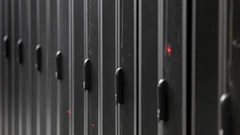
GE Vernova to Power City-Sized Data Centers With Gas as AI Demand Soars
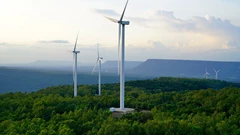
Longi Delays Solar Module Plant in China as Sector Struggles
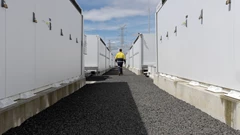
Australia Picks BP, Neoen Projects in Biggest Renewables Tender
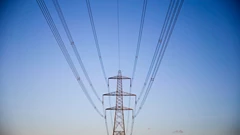
SSE Plans £22 Billion Investment to Bolster Scotland’s Grid
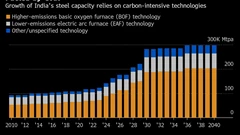
A Booming and Coal-Heavy Steel Sector Risks India’s Green Goals

bp and JERA join forces to create global offshore wind joint venture
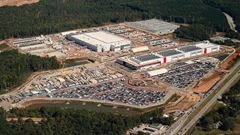
Blackstone’s Data-Center Ambitions School a City on AI Power Strains
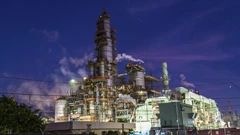
Chevron Is Cutting Low-Carbon Spending by 25% Amid Belt Tightening
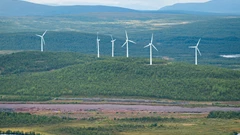
Free Green Power in Sweden Is Crippling Its Wind Industry
















